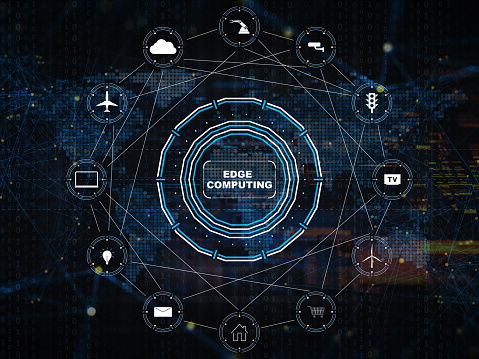What Is Cloud Computing and What Are The Advantages?

Hivecell edge computing is a new distributed computing architecture that brings data and computation closer to the desktop where it's needed, to speed up response times and conserve bandwidth. This approach makes available to businesses both the benefits of a large-scale data center and the optimization of its computing power. Enterprises like call centers, content farms, and mobile device companies are all using this technology in varying ways. In particular, by putting all the functions of the enterprise on the desktop, users can enjoy the benefits of a computing infrastructure without the large expense that goes with a dedicated infrastructure. By migrating processing power to the user's computer, they can also enjoy a form of "deferred" computing that saves money.
There are three ways that edge computing reduces IT costs. The first is by improving response time and reducing processing costs through the reduction of server overload. The second is to do so by moving processing away from the main body of the enterprise to isolated "dedicated" processing. And finally, remote management allows users to gain access to their data processing as if it were their own.
One way that edge computing reduces IT costs is by improving response time. Through the use of virtualization, one or more physical machines can be split into many different virtualized processes. Each virtual machine can run different programs, interact with data, and perform different functions, as needed. This results in greatly reduced server load, because each physical server isn't being used to provide support for every process in that machine. For additional details regarding this topic, click this link.
Another way that edge computing reduces IT costs is through the use of data storage that is offsite, rather than in-house. By putting off-site storage at data centers, enterprises avoid the need for expensive and space-consuming infrastructure. They also avoid the expense of personnel, maintenance, and power consumption for running these systems. Some edge computing solutions are built to integrate with existing data storage and management technologies.
In order to take advantage of edge computing benefits, an organization must have some prior IT experience. However, with improvements in recent years, the level of expertise required for implementing this technology is rapidly decreasing. Many companies that previously required specialized IT staff to build and manage their edge servers are now able to do so themselves. And organizations that have traditionally had to buy third-party software are now able to do so, saving a significant amount of money. And with the implementation of Cloud services by major Internet Service Providers, organizations now have access to high-speed, reliable, low-latency networks that they can use for virtualization.
Edge computing offers great potential to a number of industries. Its advantages include reducing IT costs, allowing users to access data much faster than before, and avoiding the need for massive infrastructures. Traffic that is normally handled by large numbers of routers is now being distributed over smaller sets of edge servers, allowing data to be processed more efficiently. Large companies with numerous departments may also benefit from the reduction in IT staff because employees will no longer need to be dedicated to serving requests from individual departments. But perhaps most importantly, edge computing allows for unprecedented levels of agility, improving efficiency, security, quality, and reliability. Check out this blog to get enlightened on this topic: https://en.wikipedia.org/wiki/Edge_device.
